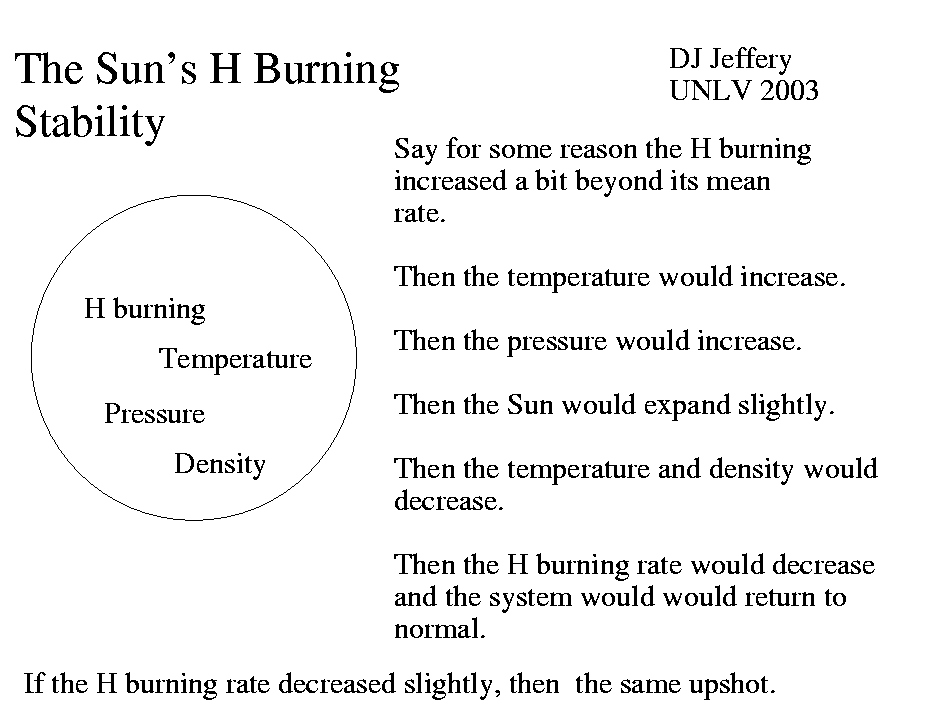
Caption: The STABILITY of hydrogen burning (in a nuclear burning sense) in the Sun and, by generalization, all main-sequence stars. The diagram is the short, incomplete explanation. A fuller explanation is below.
Stabilization process of hydrogen burning in the core of main-sequence stars:
- Say you have a main-sequence star
in exact equilibrium (or steady-state)
hydrogen burning.
Everything is in balance: heat energy generation
in
and heat energy outflow in from the core are equal.
So nothing changes with time.
- Then say a perturbation increases/decreases the core
temperature
OR density.
this will increase/decrease the
hydrogen burning rate,
and thus the heat energy generation rate, but
NOT the heat energy outflow at least
not enough to keep the
2 rates equal.
- Then the core will increase/decrease in temperature
AND
pressure.
- The increased/decreased pressure
will cause an
adiabatic expansion/contraction, but
NOT an exact one (which has exactly
NO heat energy outflow/inflow).
- The adiabatic expansion/contraction
decreases/increases
the core
temperature
AND density,
and so decreases/increases
hydrogen burning
which further
decreases/increases
the core
temperature
AND pressure
and causes an
adiabatic contraction/expansion, but
NOT an exact one.
- Then the core returns to exact equilibrium ideally.
In actual, cases there is a constant fluctuation around the exact equilibrium.
The process decribed above acts a restoring process constantly keep the core moving toward exact equilibrium despite continual perturbations and overshoots when the restoring process overshoots exact equilibrium.
- What causes the continual perburtations?
Convection in the core if convection happens there. Convection elsewhere or tidal force by companion stars and/or planets that cause asteroseismic waves (called helioseismic waves in the special case of the Sun) that travel through the core. Other things probably.
- Note that
hydrogen burning
in main-sequence stars is stable
because of the peculiarites of
main-sequence stars.
In other astrophysical environments, nuclear burning can be unstable: it can run away into an astrophysical nuclear explosion or turn off.
Examples of astrophysical nuclear explosions are thermal pulses (AKA helium shell flashes), helium flashes, novae, core collapse supernovae (but in this case the nuclear explosion is a side effect of a neutrino-driven explosion), and Type Ia supernovae (SNe Ia) (which is the most powerful explosion case).
Local file: local link: sun_hydrogen_burning_stability.html.
File: Sun file: sun_hydrogen_burning_stability.html.